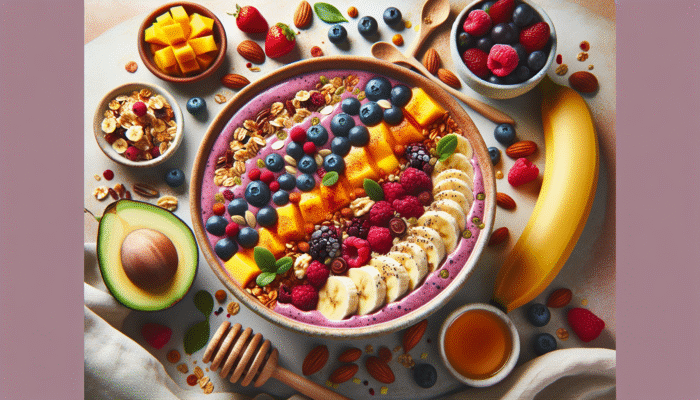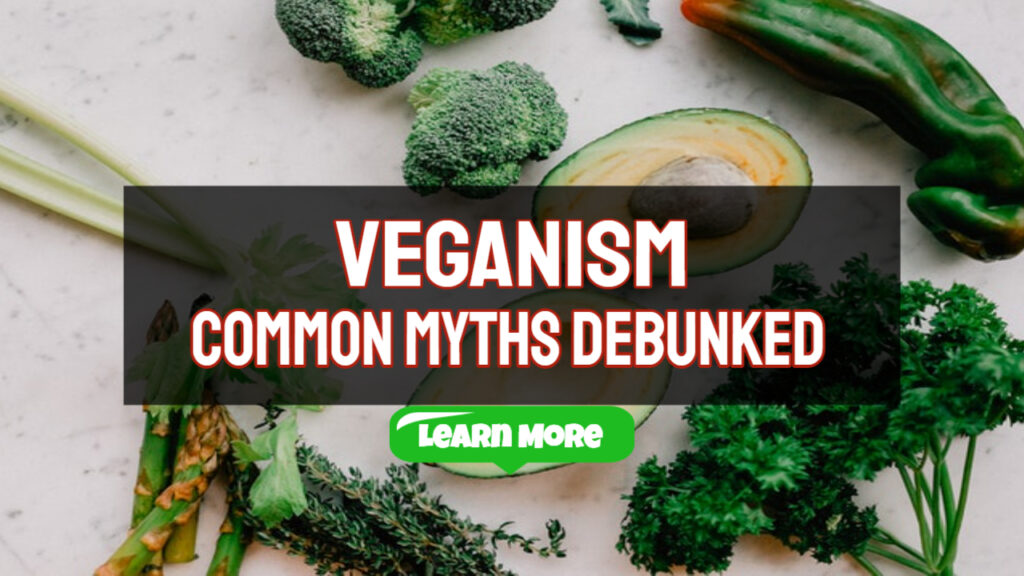Discover the Essentials of Healthy Eating to Boost Your Energy in the UK
Understanding the Fundamental Principles of Healthy Eating Standards in the UK
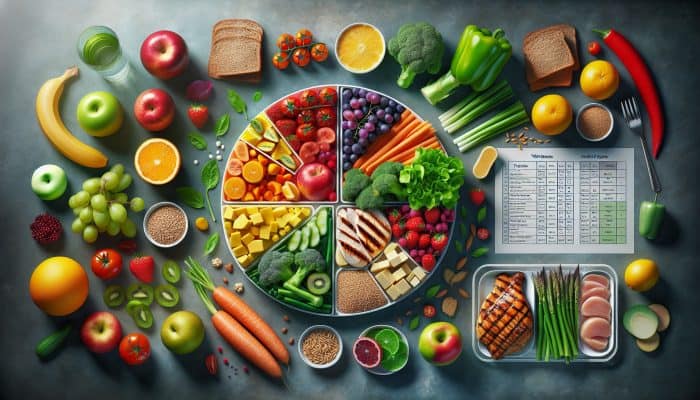
Healthy eating in the UK is centered on the principles of maintaining a balanced diet that highlights the significance of consuming a variety of food groups. It promotes the intake of adequate portions of fruits, vegetables, whole grains, and lean proteins, in accordance with established regional dietary guidelines. By emphasizing these crucial elements, individuals can ensure they obtain the essential nutrients vital for achieving optimal health and sustained energy. The core components of a comprehensive diet in the UK include:
- Fruits and vegetables: Strive for a minimum of five portions each day.
- Whole grains: Incorporate options like brown rice, wholemeal bread, and oats into your meals.
- Lean proteins: Focus on sources such as chicken, fish, beans, and lentils.
- Dairy or dairy alternatives: Opt for low-fat versions whenever feasible.
- Healthy fats: Add sources like olive oil, avocados, and nuts to your diet.
- Limited sugar and salt intake: Reduce added sugars and choose lower-salt products.
- Hydration: Ensure adequate fluid intake, prioritizing water as your main beverage.
- Seasonal produce: Favor locally sourced, seasonal fruits and vegetables.
This well-rounded approach not only enhances overall health but is also essential for increasing energy levels throughout the day.
Exploring the Impact of Local Produce on Energy Levels
Incorporating locally sourced produce into your diet can significantly elevate your energy levels. This boost is primarily attributed to the freshness and nutrient density of seasonal foods available in the UK. Consuming local produce ensures that fruits and vegetables are harvested at their peak ripeness, which maximizes both flavor and vitamin content. Eating seasonally also fosters connections to local food cultures and supports sustainable practices.
For instance, during spring, you can enjoy a bounty of asparagus and rhubarb, while summer brings a diverse assortment of berries and tomatoes. Autumn showcases hearty root vegetables like carrots and parsnips, whereas winter offers leafy greens and brassicas such as kale and Brussels sprouts. By aligning dietary choices with these seasonal harvests, individuals can savor a variety of flavors and textures, which can greatly enhance energy levels. Additionally, supporting local farmers not only strengthens community ties but also reduces the carbon footprint associated with food transport.
Essential Dietary Recommendations for Optimal Energy in the UK
The UK’s Eatwell Guide provides a visual representation of a balanced diet, illustrating how different food groups contribute to overall health and vitality. This guide categorizes foods into distinct groups: fruits and vegetables, starchy carbohydrates, proteins, dairy or dairy alternatives, and oils and spreads. Adhering to these guidelines is vital for maintaining energy levels, as they emphasize the necessity of a balanced and varied nutrient intake.
To effectively enhance energy levels, it is important to consume a diverse range of foods from each category. For example, combining whole grains with lean proteins promotes sustained energy release, while integrating colorful fruits and vegetables guarantees a robust supply of antioxidants and vitamins. The Eatwell Guide encourages individuals to make informed dietary choices, fostering a comprehensive approach to nutrition that aligns with local eating customs and preferences. By following these dietary recommendations, individuals can optimize their energy levels for daily activities and improve overall health.
Expert Insights on Healthy Eating for Increased Energy Levels

Real-Life Examples of Energy-Boosting Diets in the UK
Numerous real-life examples of energy-boosting diets across the UK demonstrate the profound impact of nutrition on enhancing vitality. For instance, a study conducted in Manchester revealed that a community group focused on meal preparation using local ingredients experienced significant increases in their energy levels and overall health. Participants reported feelings of increased energy and alertness after transitioning from processed foods to home-cooked meals rich in vegetables, whole grains, and lean proteins.
In another scenario, a sports team in Scotland adopted a nutrition plan centered around traditional Scottish foods, emphasizing salmon, oats, and hearty root vegetables. The outcomes included not only enhanced athletic performance but also improved energy levels among the team members. Regular consumption of these energy-dense foods provided the necessary fuel for rigorous training sessions and competitions.
These examples highlight that by embracing local culinary traditions and prioritizing nutrient-rich ingredients, individuals and communities can effectively enhance their energy levels. The practical implementation of energy-boosting diets underscores the importance of making informed food choices that resonate with local agricultural practices and cultural identities.
Actionable Steps to Adopt Energy-Boosting Diets in Your Daily Life
Implementing an energy-boosting diet in the UK requires practical steps that can be easily integrated into daily routines. Begin by assessing your current eating habits and identifying areas for improvement. This process may involve increasing the intake of whole foods while reducing dependence on processed options. Here are several actionable strategies to consider:
- Meal Planning: Allocate time each week to organize meals, ensuring a balanced nutrient intake across various food groups.
- Smart Shopping: Develop a grocery list based on planned meals, emphasizing fresh produce and whole grains.
- Batch Cooking: Prepare larger portions of meals to save time during busy weekdays, ensuring nutritious options are readily available.
- Mindful Snacking: Opt for healthy snacks, such as nuts, fruits, or yoghurt, to maintain energy levels throughout the day.
- Stay Informed: Educate yourself about seasonal produce and explore local markets for fresh options.
- Mindful Eating: Pay attention to portion sizes and respond to hunger cues, fostering a healthier relationship with food.
- Hydration Focus: Carry a water bottle and set reminders to drink water regularly, ensuring optimal hydration.
- Community Engagement: Participate in local cooking classes or nutrition workshops to gain additional knowledge and support from peers.
By embracing these strategies, individuals can establish a sustainable energy-boosting diet that aligns with their lifestyles and preferences, ultimately leading to enhanced vitality and well-being.
Common Challenges to Maintaining an Energy-Boosting Diet and Solutions

Maintaining an energy-boosting diet in the UK can present various challenges, including time constraints, budget limitations, and limited access to fresh produce. Many individuals struggle to prioritize healthy eating amidst hectic schedules, often resulting in a reliance on convenience foods that are typically high in sugars and unhealthy fats. Financial constraints can exacerbate dietary choices, making it difficult to obtain fresh, high-quality ingredients.
Access to fresh produce may also be restricted in certain areas, particularly in food deserts where supermarkets are scarce. In such circumstances, individuals might resort to purchasing processed foods, which hinders their attempts to maintain a nutrient-dense diet. To address these challenges, various strategies can be employed:
- Time Management: Allocate specific times each week for meal preparation and grocery shopping to facilitate effective planning.
- Budget-Friendly Shopping: Explore local markets for better deals on fresh produce, and consider buying in bulk to save costs.
- Community Resources: Engage with local community gardens or food co-ops, which often provide access to fresh produce at reduced prices.
- Frozen Options: Utilize frozen fruits and vegetables as convenient alternatives when fresh options are unavailable.
- Simple Recipes: Focus on quick and easy recipes that require minimal ingredients and preparation time.
- Mindful Snacking: Keep healthy snacks readily available to avoid resorting to less nutritious options during busy periods.
- Family Involvement: Include family members in meal planning and preparation to share the workload and create a supportive environment.
- Education and Advocacy: Get involved in community initiatives that promote healthy eating and raise awareness of accessible resources.
By tackling these challenges with practical solutions, individuals in the UK can successfully maintain an energy-boosting diet that enhances their overall well-being.
The Connection Between Healthy Eating and Increased Energy Levels in the UK
Exploring the Relationship Between Nutrition and Energy Production
Understanding the physiological mechanisms through which nutrients from food are converted into energy is crucial for recognizing the impact of diet on energy levels. When food is consumed, the body breaks down carbohydrates, proteins, and fats into their basic molecules. These molecules are then processed within the cells to generate adenosine triphosphate (ATP), which serves as the primary energy currency of the body.
Each nutrient plays a specific role in energy production. For example, carbohydrates are the body’s preferred energy source, providing quick fuel for both physical activities and cognitive functions. Meanwhile, proteins support muscle repair and maintenance, while healthy fats offer a concentrated energy source for prolonged stamina. Key nutrients that contribute to energy production include:
- Complex carbohydrates: Found in whole grains, legumes, and starchy vegetables.
- Lean proteins: Present in chicken, fish, beans, and dairy products.
- Healthy fats: Sourced from items like avocados, nuts, and olive oil.
- B vitamins: Essential for energy metabolism, located in whole grains and leafy greens.
- Iron: Important for oxygen transport in the blood, abundant in red meat and lentils.
- Magnesium: Supports muscle function and energy production, found in seeds and nuts.
- Hydration: Water is vital for nutrient transport and metabolic processes.
- Antioxidants: Present in fruits and vegetables, they combat oxidative stress and promote overall health.
By focusing on a diet rich in these essential nutrients, individuals in the UK can enhance their energy production capabilities, leading to improved vitality and overall health.
Identifying Foods That Enhance Energy Levels in the UK
Identifying specific foods that can boost energy levels is essential for crafting a diet that supports vitality. In the UK, there are numerous options known for their energizing properties. For instance, foods such as oats and wholegrain bread provide complex carbohydrates, ensuring sustained energy release. Additionally, lean proteins like chicken and fish contribute to muscle repair and recovery, further enhancing physical performance.
Fruits like bananas and berries are rich in natural sugars and antioxidants, making them excellent choices for quick energy boosts. Incorporating leafy greens such as spinach and kale delivers essential vitamins and minerals that promote overall health. Let’s explore some of the best energy-boosting foods available in the UK:
- Quinoa: A complete protein source providing all nine essential amino acids.
- Sweet potatoes: Packed with vitamins A and C, offering energy and antioxidants.
- Greek yoghurt: High in protein and probiotics, supporting gut health and energy levels.
- Nuts and seeds: Excellent sources of healthy fats and proteins, ideal for snacking.
- Fatty fish, such as salmon, are rich in omega-3 fatty acids that promote brain health.
- Legumes: Beans and lentils provide great sources of protein and fiber, helping you feel full longer.
- Dark chocolate: Offers a quick energy boost while being rich in antioxidants and mood-enhancing properties.
- Herbal teas: Provide hydration along with the benefits of natural antioxidants.
By incorporating these foods into daily meals, individuals can significantly enhance their energy levels and overall health.
The Crucial Role of Hydration in Maintaining Energy Levels
Proper hydration is essential for sustaining energy levels throughout the day. In the UK, tap water meets stringent safety standards and serves as an excellent source of hydration. Adequate fluid intake is vital for optimal physiological function, including nutrient transport, temperature regulation, and metabolic processes. Even mild dehydration can lead to fatigue, diminished cognitive function, and decreased physical performance.
To promote proper hydration, it’s important to include water-rich foods in your diet, such as fruits and vegetables. Foods like cucumbers, oranges, and watermelons are fantastic choices that contribute to overall fluid intake. Additionally, herbal teas and low-sugar fruit juices can provide hydration while offering nutritional benefits. Here are some tips for maintaining optimal hydration:
- Carry a reusable water bottle throughout the day to encourage consistent water intake.
- Set reminders to drink water, particularly during busy periods.
- Incorporate water-rich foods into meals and snacks.
- Monitor urine color; a clear or light yellow indicates adequate hydration.
- Limit caffeinated beverages that may lead to dehydration.
- Explore herbal teas for variety and additional health benefits.
- Establish hydration goals, such as aiming for 2 liters of water per day.
- Track fluid intake using mobile apps for accountability.
By prioritizing hydration, individuals can greatly enhance their energy levels, contributing to overall health and well-being.
Exploring the Benefits of Healthy Eating for Energy in the UK
The Impact of Healthy Eating on Physical Performance
A nutritious diet can significantly enhance physical performance and endurance, particularly for popular sports and activities in the UK. For example, runners and cyclists greatly benefit from energy-boosting foods that support stamina and recovery. Consuming a diet rich in complex carbohydrates, lean proteins, and healthy fats allows athletes to perform at their peak.
In the context of UK sports, football players rely on energy-dense foods to fuel their high-intensity training and matches. A well-balanced intake of whole grains, fruits, and proteins not only enhances performance but also aids in quicker recovery post-exercise. Research indicates that athletes who adhere to a structured diet report improved energy levels and reduced fatigue during training sessions.
Moreover, recreational activities such as hiking in the Yorkshire Dales or cycling along the South Downs can be greatly enhanced through appropriate nutrition. By consuming energy-boosting foods before engaging in these activities, individuals can experience extended endurance and an improved overall experience. A thoughtfully planned diet enables individuals to fully enjoy their preferred sports, resulting in healthier and more active lifestyles.
Healthy Eating’s Influence on Mental Clarity and Focus
Healthy eating is essential for enhancing cognitive functions, particularly within the UK’s work and educational environments. Nutrient-rich foods provide the brain with vital vitamins and minerals that support memory, concentration, and overall cognitive performance. A diet abundant in omega-3 fatty acids, antioxidants, and B vitamins has been linked to improved mental clarity and focus.
For instance, students who follow a balanced diet that includes foods like fatty fish, nuts, whole grains, and leafy greens are better prepared to retain information and excel academically. Similarly, professionals in fast-paced work settings benefit from sustained energy levels resulting from proper nutrition, leading to enhanced productivity and creativity.
Incorporating regular meals and snacks that prioritize brain-boosting nutrients is crucial for maintaining mental clarity. This approach not only supports learning and achievement but also contributes to overall mental well-being. Embracing healthy eating within daily routines fosters a culture of wellness that ultimately impacts personal and professional success.
The Long-Term Health Benefits of Maintaining Healthy Eating Habits
Following an energy-boosting diet offers significant long-term health benefits, reducing the risk of chronic diseases prevalent in the UK. Diets rich in fruits, vegetables, whole grains, and lean proteins are associated with lower rates of obesity, heart disease, type 2 diabetes, and certain cancers. The long-term benefits of healthy eating extend beyond immediate energy enhancement, promoting overall vitality and well-being.
Research indicates that individuals who adhere to a balanced diet experience improved cardiovascular health, better weight management, and enhanced immune function. Furthermore, a nutrient-dense diet supports healthy aging and decreases the risk of cognitive decline. By prioritizing energy-boosting foods, individuals not only improve their quality of life today but also lay the groundwork for a healthier future.
Additionally, the advantages of healthy eating extend to mental health, with studies showing correlations between nutrient intake and mood regulation. A balanced diet can alleviate symptoms of anxiety and depression, contributing to enhanced overall well-being. By making informed dietary choices, individuals can significantly impact their long-term health and quality of life.
Research-Backed Insights on Healthy Eating for Energy Enhancement
Findings from UK-Based Studies on the Benefits of Healthy Eating
Research conducted within the UK consistently highlights the connection between diet and energy levels, providing valuable insights into the benefits of a healthy diet. Numerous studies demonstrate that individuals who consume nutrient-dense diets experience increased energy levels and enhanced overall health. For instance, a study led by the University of Cambridge found that participants who increased their intake of fruits and vegetables reported greater vitality and reduced fatigue.
Moreover, research from the University of Edinburgh explored the dietary habits of Scottish adults and their relationship to energy levels. Findings revealed that those who adhered to the Scottish dietary guidelines, which emphasize whole grains, fruits, and lean proteins, experienced significantly higher energy levels and lower rates of fatigue. These studies underscore the importance of a balanced diet in sustaining energy levels and promoting overall health.
The conclusions drawn from these UK-based studies reinforce the necessity for public health initiatives advocating for healthy eating. By raising awareness of the benefits of a nutrient-rich diet, individuals can make informed choices that lead to improved energy levels and a higher quality of life.
How the UK’s Climate Shapes Dietary Needs and Energy Levels
The climate in the UK significantly influences dietary requirements for maintaining energy levels, particularly concerning seasonal variations. The relatively temperate maritime climate dictates the types of produce that can be cultivated and consumed throughout the year. The seasonal availability of specific fruits and vegetables requires dietary patterns to adapt accordingly to ensure individuals receive essential nutrients year-round.
For instance, during the winter months, root vegetables like potatoes, carrots, and parsnips are abundant, providing necessary energy through their carbohydrate content. Conversely, summer offers a variety of fresh fruits and salads that are rich in vitamins and hydration. Understanding these seasonal transitions allows individuals to make informed food choices that align with their nutritional needs, ultimately supporting their energy levels.
Additionally, the UK’s climate influences cooking methods and food preservation techniques. Warmer months may inspire lighter, fresher meals, while colder weather typically calls for heartier dishes that provide warmth and comfort. Tailoring diets to reflect these seasonal changes ensures that individuals can optimize their energy levels while enjoying a diverse array of flavors and nutrients.
The Economic Benefits of Healthy Eating in the UK
The economic advantages of healthy eating in the UK are substantial, encompassing lower healthcare costs and increased productivity. By prioritizing a nutritious diet, individuals can reduce the risk of chronic diseases, leading to decreased medical care and treatment expenses. Healthier populations place less strain on the National Health Service, enabling resources to be allocated to other critical areas.
Furthermore, maintaining a healthy diet contributes to enhanced workplace productivity. Employees who follow balanced diets typically experience better energy levels, improved focus, and higher overall performance. This translates to reduced absenteeism and increased job satisfaction, benefiting both businesses and the economy as a whole. The economic benefits of healthy eating can be summarized as follows:
- Reduced healthcare costs: A lower incidence of chronic diseases results in decreased medical expenses.
- Increased productivity: Healthier employees demonstrate improved performance and fewer sick days.
- Economic growth: A healthier workforce contributes to greater economic output and innovation.
- Stronger local economies: Supporting local farmers and producers enhances community resilience.
- Lower food waste: Emphasizing seasonal and local produce minimizes food waste and environmental impact.
- Enhanced quality of life: Improved health leads to greater life satisfaction and overall well-being.
- Public health savings: A healthier population reduces the burden on public health services.
- Investment in education: Healthier children achieve better educational outcomes, impacting future workforce quality.
These economic implications underscore the importance of promoting healthy eating as a public health priority in the UK.
How UK Dietary Guidelines Can Enhance Energy Levels
Adhering to UK dietary guidelines can greatly boost energy levels by ensuring a balanced intake of essential food groups and nutrients. The Eatwell Guide serves as a vital resource for individuals aiming to optimize their diets for improved energy. By following these recommendations, individuals can make informed choices that enhance their overall health.
The guidelines emphasize the need to consume fruits and vegetables, whole grains, proteins, and dairy or dairy alternatives. By prioritizing a diversity of foods within each category, individuals increase their chances of acquiring the nutrients necessary for energy production. For instance, incorporating a wide range of colorful fruits and vegetables guarantees a rich supply of vitamins and antioxidants, while whole grains provide lasting energy through complex carbohydrates.
Additionally, the recommended intake of lean proteins supports muscle health, particularly for those engaged in regular physical activity. Including healthy fats from sources like nuts and avocados can further elevate energy levels and promote cardiovascular health. Ultimately, adhering to UK dietary guidelines not only addresses immediate energy needs but also fosters long-term health and well-being.
Case Studies Highlighting Successful Energy Boosting Through Diet
Numerous case studies illustrate how individuals in the UK have successfully enhanced their energy levels through dietary modifications. One notable case involves a university student from Bristol who struggled with fatigue due to irregular eating patterns. After implementing a structured meal plan rich in whole foods and reducing processed snacks, she reported improved concentration and energy throughout her daily activities.
Similarly, a working professional in London underwent a dietary transformation by incorporating more plant-based meals into his lifestyle. By focusing on ingredients like legumes, whole grains, and fresh vegetables, he experienced a significant boost in energy, allowing him to effectively manage his demanding work schedule. These case studies underscore the practical applications of energy-boosting diets and their profound impact on individuals’ lives.
Through a commitment to dietary changes and a focus on nutrient-rich foods, these individuals successfully elevated their energy levels, showcasing the transformative effects of healthy eating on daily experiences. Their journeys serve as motivating examples for others seeking to enhance their vitality and overall health.
Implementing Practical Strategies for Healthy Eating to Boost Energy Levels
Incorporating Traditional UK Foods into an Energy-Boosting Diet
Traditional UK foods can be skillfully adapted to fit an energy-boosting diet, blending cultural flavors with nutritional benefits. By reimagining beloved classics, individuals can relish the comfort of traditional meals while prioritizing health. For example, a classic English breakfast can be revitalized by replacing bacon and sausages with grilled tomatoes, sautéed spinach, and poached eggs, resulting in a nutritious start to the day.
Another adaptation is shepherd’s pie, which can be made healthier by using lean minced lamb or lentils, adding a variety of vegetables, and topping it with mashed sweet potatoes instead of regular potatoes. This version retains the dish’s comforting essence while enhancing its nutritional profile. Here are several adaptations of traditional UK dishes for an energy-boosting diet:
- Fish and chips: Swap fried fish for baked or grilled versions, served with baked sweet potato wedges.
- Stews: Create hearty vegetable and bean stews filled with seasonal produce, accompanied by wholemeal bread.
- Curries: Use chickpeas or lentils with an array of spices for flavorful, protein-rich curries.
- Breakfast porridge: Top with fresh berries, nuts, and seeds for a nutrient-dense morning meal.
- Roast dinners: Feature roasted vegetables alongside lean meats and wholegrain sides.
- Apple crumble: Utilize oats and nuts for the topping, served with low-fat yoghurt instead of custard.
- Ploughman’s lunch: Incorporate wholegrain bread, cheese, and an assortment of fresh vegetables for a balanced meal.
- Pies: Create lighter versions using wholemeal pastry and fillings of seasonal vegetables and lean meats.
These adaptations illustrate how traditional UK foods can be enjoyed while delivering the necessary nutrients for energy and vitality.
How Meal Planning Supports Energy Levels
Meal planning is an effective strategy for maintaining consistent energy levels throughout the day, especially in the fast-paced lifestyles common in the UK. By dedicating time to organize meals and snacks, individuals can ensure they are making healthy choices that adequately fuel their bodies. Here are some benefits of meal planning tailored to UK lifestyles:
- Time Savings: Planning meals reduces daily decision fatigue, facilitating more efficient time management.
- Balanced Nutrition: Guarantees a diverse intake of nutrients by incorporating various food groups.
- Portion Control: Helps manage portion sizes, preventing overeating and encouraging healthier eating habits.
- Reduced Food Waste: Planning promotes efficient ingredient use, minimizing waste and saving money.
- Convenience: Pre-prepared meals facilitate adherence to a healthy diet, especially during busy weeks.
- Budget-Friendly: Shopping according to a meal plan allows for cost-effective choices and reduces impulse buys.
- Healthy Snacking: Planning for snacks ensures nutritious options are readily available, deterring unhealthy snacking habits.
- Family Involvement: Engaging family members in the meal planning process fosters healthier eating habits for everyone.
By embracing meal planning, individuals can sustain energy levels throughout the day while establishing a sustainable approach to healthy eating that fits their unique lifestyles.
The Role of Supplements in Energy-Boosting Diets in the UK
While a well-balanced diet should provide most necessary nutrients for energy production, some individuals in the UK may benefit from supplements to complement their dietary intake. Common supplements such as B vitamins, iron, and omega-3 fatty acids can support energy levels, particularly for those with specific dietary restrictions or deficiencies.
For instance, individuals following a vegetarian or vegan diet may need to consider vitamin B12 supplements, as this nutrient is primarily found in animal products. Similarly, those who do not consume enough fatty fish might benefit from omega-3 supplements to promote brain health and energy levels. It’s crucial, however, to approach supplementation with caution.
Consulting with a healthcare professional or registered dietitian can help identify specific nutrient needs and determine appropriate supplement types and dosages. Additionally, choosing high-quality supplements from reputable brands ensures safety and effectiveness. Here are some commonly used supplements in the UK for energy-boosting diets:
- B vitamins: Aid energy metabolism and help alleviate fatigue.
- Iron: Essential for oxygen transport, particularly important for active individuals.
- Vitamin D: Supports bone health and immune function, especially during winter months.
- Magnesium: Important for muscle function and energy production, beneficial for active lifestyles.
- Omega-3 fatty acids: Promote brain health and reduce inflammation, enhancing overall well-being.
- Probiotics: Support gut health, which can influence energy levels and nutrient absorption.
- Coenzyme Q10: Supports cellular energy production, particularly beneficial for older adults.
- Herbal supplements: Such as ginseng or ashwagandha, recognized for their energy-boosting properties.
By strategically incorporating supplements as necessary, individuals can enhance their energy-boosting diets while prioritizing whole foods as their primary source of nutrition.
Key Tips for Healthy Eating in the UK
Best Practices for Grocery Shopping in the UK
Selecting energy-boosting foods during grocery shopping necessitates strategic practices that support healthy eating. In the UK, grocery stores and markets provide a wide array of options, making it crucial to navigate choices wisely. Start by creating a shopping list based on planned meals, focusing on whole foods and nutrient-dense selections.
When shopping, prioritize fresh, seasonal produce, as these items are typically more affordable and flavorful. Scrutinizing food labels is essential; seek products with minimal added sugars and unhealthy fats. Furthermore, consider purchasing wholegrain options, such as brown rice or wholemeal bread, which deliver sustained energy. Here are some effective grocery shopping tips:
- Shop the Perimeter: Fresh produce, dairy, and lean proteins are generally located along the outer aisles of the store.
- Choose Seasonal Items: Local produce is usually fresher and more nutrient-dense.
- Buy in Bulk: Purchase non-perishable items like grains and legumes in bulk for cost savings.
- Compare Labels: Look for lower sugar and salt content when selecting packaged foods.
- Explore Local Markets: Farmers’ markets may offer fresher options while supporting local agriculture.
- Avoid Shopping When Hungry: This helps minimize the likelihood of impulse purchases of unhealthy snacks.
- Involve Family Members: Bring others along to share ideas and discover new food options.
- Use a Grocery App: Many apps provide nutritional information and assist in tracking food purchases.
By implementing these practices, individuals can effectively choose energy-boosting foods that align with their health goals, making grocery shopping a productive and enjoyable experience.
Maintaining Healthy Eating While Dining Out in the UK
Staying committed to an energy-boosting diet while dining out in the UK is achievable through mindful choices and planning. Many restaurants now offer healthier menu options, simplifying the process of selecting meals that align with nutritional objectives. When eating out, it is essential to be conscious of portion sizes and ingredient choices.
Begin by scanning the menu for dishes featuring lean proteins, whole grains, and a variety of vegetables. Opt for grilling, baking, or steaming preparations instead of fried options. Requesting sauces and dressings on the side provides better control over added fats and calories. Here are some tips for healthy dining out in the UK:
- Research Menus in Advance: Many restaurants provide their menus online, allowing for pre-selection of healthier choices.
- Choose Smaller Portions: Consider sharing dishes or ordering appetizers as main meals.
- Ask About Ingredients: Inquire about how dishes are prepared and request modifications as needed.
- Prioritize Vegetables: Look for meals that feature a variety of colorful vegetables.
- Limit Alcohol: If consuming alcohol, opt for lighter options and limit intake to sustain energy levels.
- Skip Dessert or Share: If indulging, consider sharing a dessert to enjoy without overindulging.
- Stay Hydrated: Drink water or herbal tea instead of sugary beverages.
- Follow the 80/20 Rule: Aim to make healthy choices most of the time while allowing for occasional treats.
By making intentional choices when dining out, individuals can continue to prioritize their energy-boosting diets without sacrificing enjoyment or flavor.
Cooking Techniques for Energy-Boosting Meals
The cooking methods employed have a significant impact on nutrient retention and overall meal quality, making it vital to utilize techniques that enhance energy-boosting properties. In the UK, traditional cooking methods can be adapted to preserve nutrients while creating delightful meals. Steaming, Baking, grilling, and stir-frying are excellent techniques that maintain the integrity of vitamins and minerals in foods.
For example, steaming vegetables not only preserves their vibrant colors but also ensures they remain rich in vitamins. Baking fish with herbs and spices enhances flavor without excessive oils or fats. Stir-frying provides a quick method for incorporating a variety of vegetables and proteins while retaining their nutritional content. Here are some effective cooking techniques for preparing energy-boosting meals:
- Steaming: Preserves nutrients and flavors, ideal for vegetables and fish.
- Baking: Creates healthier versions of traditional dishes with minimal added fats.
- Grilling: Adds delicious flavors while reducing the need for oils.
- Stir-frying: A quick cooking method that preserves nutrients from vegetables and proteins.
- Slow Cooking: Excellent for creating hearty stews and soups that are both nutritious and satisfying.
- Raw Preparations: Incorporate salads and fresh ingredients to maximize nutrient intake.
- Batch Cooking: Prepare large quantities to save time and ensure nutritious meals are always available.
- Fermentation: Enhances gut health and adds unique flavors to dishes.
By utilizing these cooking techniques, individuals can create energy-boosting meals that are not only nutritious but also enjoyable to eat.
Including Energy-Boosting Snacks in Your Daily Routine in the UK
Incorporating energy-boosting snacks into daily routines is essential for maintaining consistent energy levels throughout the day. In the UK, there are plenty of healthy snack options available, making it easy to select nutritious choices that fuel the body. Choosing snacks that combine protein, healthy fats, and complex carbohydrates can help sustain energy levels and prevent fatigue.
For example, a handful of nuts paired with a piece of fruit provides a balanced mix of nutrients that deliver instant energy. Greek yoghurt with berries serves as a refreshing, protein-packed option, while wholegrain crackers with hummus offer a satisfying and energizing snack. Here are some recommendations for healthy snacks available in the UK:
- Nuts: Almonds, walnuts, and pistachios are excellent sources of healthy fats and protein.
- Fruits: Apples, bananas, and oranges provide natural sugars and hydration.
- Greek yoghurt: A protein-rich snack that can be complemented with fruits or nuts.
- Vegetable sticks: Carrot and cucumber sticks with hummus or tzatziki for added flavor.
- Wholegrain crackers: Pair with cheese or nut butter for sustained energy.
- Energy bars: Look for low-sugar, high-protein options made with whole foods.
- Popcorn: Air-popped popcorn provides a wholegrain snack alternative.
- Dark chocolate: A small piece can satisfy sweet cravings while providing antioxidants.
By integrating these snacks into daily routines, individuals can effectively maintain their energy levels, supporting overall health and productivity.
Addressing Barriers to Healthy Eating in the UK
Solutions for Food Deserts in the UK
Food deserts pose a significant challenge to maintaining healthy eating habits in certain regions of the UK, where access to fresh, nutritious foods is limited. These communities often depend on convenience stores with restricted produce options, making it challenging to adopt an energy-boosting diet. Addressing this issue requires multifaceted strategies to improve food access and nutrition.
One effective approach is to establish community gardens, empowering residents to grow their own fruits and vegetables. Local initiatives can forge partnerships with farmers’ markets to deliver fresh produce directly to underserved areas. Mobile markets or food delivery services can also enhance access to nutritious options for those unable to reach grocery stores. Here are several strategies to combat food deserts:
- Community Gardening: Encourage local residents to cultivate their own produce, fostering self-sufficiency.
- Mobile Markets: Introduce traveling markets that sell fresh produce in underserved neighborhoods.
- Food Co-ops: Establish cooperative grocery stores that prioritize local and healthy options.
- Education Initiatives: Promote nutrition education to empower residents to make healthier choices.
- Partnerships with Local Farms: Facilitate direct sales from local producers to communities.
- Government Support: Advocate for policies that address food insecurity and improve access to healthy foods.
- Healthy Corner Stores: Collaborate with local convenience stores to enhance the availability of nutritious products.
- Public Transport Solutions: Improve transportation options to facilitate access to larger grocery stores.
By addressing the barriers posed by food deserts, communities can work towards sustainable access to healthy foods, ultimately improving dietary habits and energy levels.
Strategies to Navigate Budget Constraints in Healthy Eating
Budget constraints can significantly impact the ability to maintain an energy-boosting diet in the UK. However, with strategic planning and creativity, individuals can enjoy healthy eating without overspending. To effectively manage budget limitations, consider the following strategies:
- Meal Planning: Organize meals to minimize food waste and make cost-effective choices.
- Seasonal Shopping: Purchase produce that is in season, as it tends to be more affordable.
- Bulk Purchasing: Buy non-perishable items in bulk to save money over time.
- Home Cooking: Preparing meals from scratch is generally more economical and healthier than dining out.
- Limit Processed Foods: Focus on whole foods, which are often more cost-effective and nutritious.
- Utilize Leftovers: Repurpose leftovers into new meals to maximize food usage.
- Explore Discount Stores: Investigate budget supermarkets that offer fresh produce at lower prices.
- Join Community Programs: Participate in local initiatives that provide access to affordable, healthy foods.
By applying these strategies, individuals can successfully navigate budget constraints while maintaining an energy-boosting diet that supports their health and well-being.
The Importance of Education in Promoting Healthy Eating
Education plays a crucial role in promoting healthy eating practices in the UK, especially through community initiatives and school programs. By increasing awareness of the significance of nutrition and providing practical guidance, individuals can make informed choices that enhance their energy and overall health.
Schools can implement nutrition education programs that teach children about the benefits of healthy eating, incorporating hands-on activities like gardening and cooking lessons. Community workshops can offer valuable resources for adults, providing cooking demonstrations, meal planning guidance, and budgeting strategies for healthy eating. Here are several ways education can foster healthy eating:
- School Programs: Introduce nutrition education in schools to instill healthy habits from a young age.
- Community Workshops: Provide classes that educate individuals on healthy cooking and meal preparation techniques.
- Public Health Campaigns: Raise awareness of the benefits of healthy eating through media and community outreach.
- Collaborations with Local Organizations: Partner with healthcare providers to promote nutrition education initiatives.
- Online Resources: Develop websites and apps that offer easily accessible nutritional information.
- Incorporate Local Produce: Teach the advantages of seasonal eating and support for local farmers.
- Cooking Challenges: Encourage community members to participate in healthy cooking competitions.
- Interactive Events: Host tastings and demonstrations at local fairs and markets to engage the community.
By prioritizing education and resources, communities can empower individuals to make healthier choices, ultimately leading to improved energy levels and overall well-being.
Frequently Asked Questions About Healthy Eating in the UK
What Are the Core Components of a Healthy Diet in the UK?
Core components include fruits, vegetables, whole grains, lean proteins, dairy or alternatives, healthy fats, and limited sugar and salt.
How Can Local Produce Enhance Energy Levels?
Local produce is typically fresher and retains more nutrients, leading to increased energy and vitality when consumed.
What Is the Purpose of the Eatwell Guide?
The Eatwell Guide visually represents a balanced diet in the UK, illustrating how different food groups contribute to overall health and well-being.
How Does Hydration Influence Energy Levels?
Proper hydration is essential for nutrient transport and metabolic processes, as dehydration can result in fatigue and decreased performance.
What Are Some Energy-Boosting Foods Available in the UK?
Options include whole grains, lean proteins, fruits, vegetables, nuts, and seeds, all contributing to sustained energy.
How Can I Maintain an Energy-Boosting Diet on a Budget?
Meal planning, buying in bulk, and focusing on seasonal produce can facilitate a healthy diet without overspending.
What Challenges Do Residents of the UK Face in Maintaining Healthy Eating?
Challenges include time constraints, budget limitations, and limited access to fresh produce, particularly in food deserts.
Can Traditional UK Foods Be Modified for Better Health?
Yes, traditional dishes can be reimagined with healthier ingredients while preserving their cultural flavors and comfort.
How Can Education Promote Healthy Eating in the UK?
Education initiatives can raise awareness, teach cooking skills, and foster community engagement to support improved dietary choices.
What Role Do Supplements Play in an Energy-Boosting Diet?
Supplements can enhance nutrient intake for energy, especially for individuals with dietary restrictions or deficiencies, but should be approached judiciously.
Connect with us on Facebook!
The Article Healthy Eating for Energy Boost: UK Guide Was First Published On https://acupuncture-frome.co.uk
The Article Energy Boost: A UK Guide to Healthy Eating Was Found On https://limitsofstrategy.com
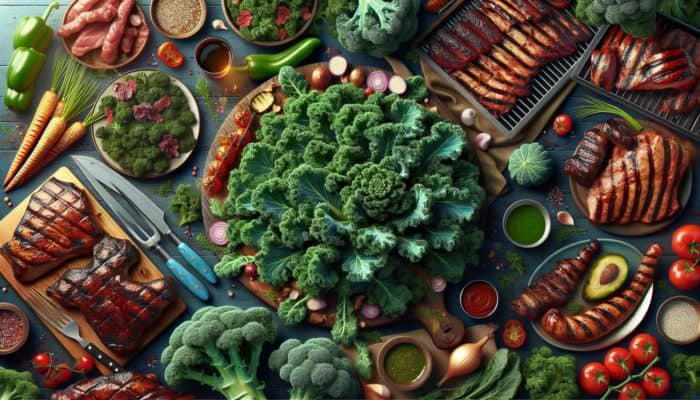

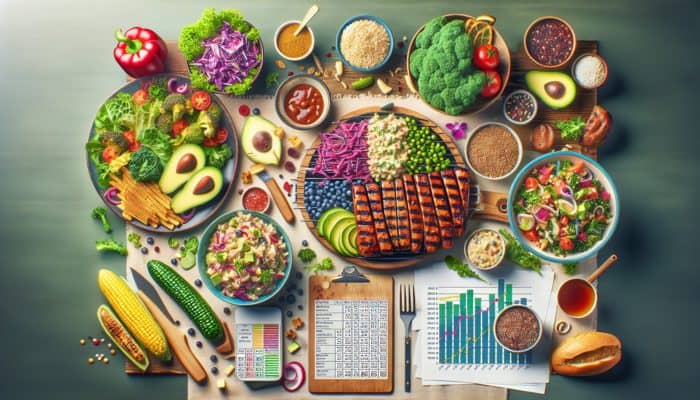







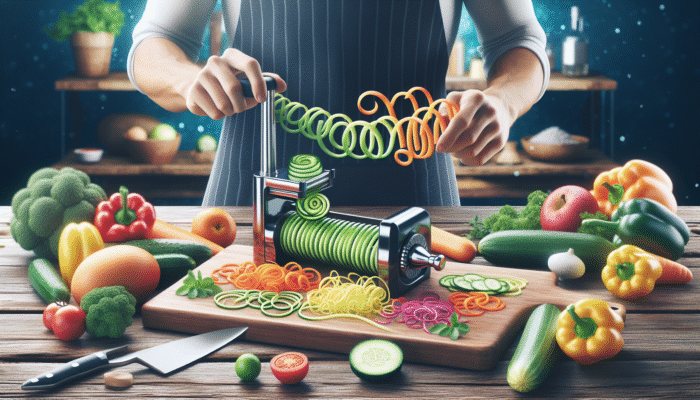


 Here’s what happens behind the scenes: specific neurons in your gut activate in response to sugar consumption. These neurons are vital components of a gut-brain circuit that communicates directly with the brainstem through the vagus nerve. This nerve is the primary communication pathway between your gut and brain, playing a critical role in your craving responses.
Here’s what happens behind the scenes: specific neurons in your gut activate in response to sugar consumption. These neurons are vital components of a gut-brain circuit that communicates directly with the brainstem through the vagus nerve. This nerve is the primary communication pathway between your gut and brain, playing a critical role in your craving responses. Yet, it’s crucial to understand that cravings extend beyond the physical realm.
Yet, it’s crucial to understand that cravings extend beyond the physical realm. Berries, in particular, are an excellent choice due to their lower sugar content compared to other fruits, in addition to being high in fiber. This combination slows digestion and keeps you feeling full for a prolonged period. Opt for strawberries, raspberries, and blueberries to satisfy your sweet tooth without causing significant blood sugar spikes. If your cravings are particularly strong, consider sweeter fruits like mangoes, grapes, or pineapples. Pairing fruits with natural yogurt or nuts can enhance satisfaction further, as healthy proteins and fats prolong feelings of fullness.
Berries, in particular, are an excellent choice due to their lower sugar content compared to other fruits, in addition to being high in fiber. This combination slows digestion and keeps you feeling full for a prolonged period. Opt for strawberries, raspberries, and blueberries to satisfy your sweet tooth without causing significant blood sugar spikes. If your cravings are particularly strong, consider sweeter fruits like mangoes, grapes, or pineapples. Pairing fruits with natural yogurt or nuts can enhance satisfaction further, as healthy proteins and fats prolong feelings of fullness.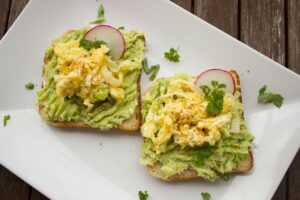 Protein acts as a formidable ally in overcoming cravings. Consuming protein-rich foods such as eggs, chicken, fish, lentils, or tofu can help you feel satiated for extended periods. This sense of fullness is attributed to protein’s ability to slow digestion and regulate hunger hormones. It reduces levels of ghrelin (the hormone responsible for hunger) while elevating hormones such as PYY and GLP-1, which signal fullness to the brain.
Protein acts as a formidable ally in overcoming cravings. Consuming protein-rich foods such as eggs, chicken, fish, lentils, or tofu can help you feel satiated for extended periods. This sense of fullness is attributed to protein’s ability to slow digestion and regulate hunger hormones. It reduces levels of ghrelin (the hormone responsible for hunger) while elevating hormones such as PYY and GLP-1, which signal fullness to the brain. When cravings strike, having smart snack options readily available can genuinely save the day. Greek yogurt stands out as an exceptional choice—it is high in protein, rich in calcium, and beneficial for gut health—especially when it contains live cultures. Opt for plain yogurt without added sugars, and enhance its flavor with berries or a drizzle of
When cravings strike, having smart snack options readily available can genuinely save the day. Greek yogurt stands out as an exceptional choice—it is high in protein, rich in calcium, and beneficial for gut health—especially when it contains live cultures. Opt for plain yogurt without added sugars, and enhance its flavor with berries or a drizzle of 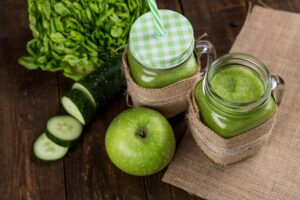 Smoothies can serve as an excellent alternative to sugary snacks or sodas. By blending whole fruits with yogurt or milk, you achieve natural sweetness, fiber, and an abundance of nutrients.
Smoothies can serve as an excellent alternative to sugary snacks or sodas. By blending whole fruits with yogurt or milk, you achieve natural sweetness, fiber, and an abundance of nutrients.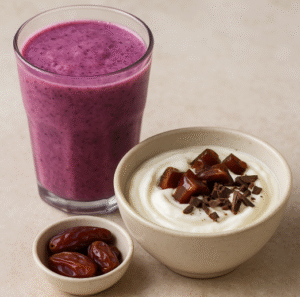 You can also experiment with other creative combinations:
You can also experiment with other creative combinations: Stay Hydrated to Help Curb Cravings
Stay Hydrated to Help Curb Cravings